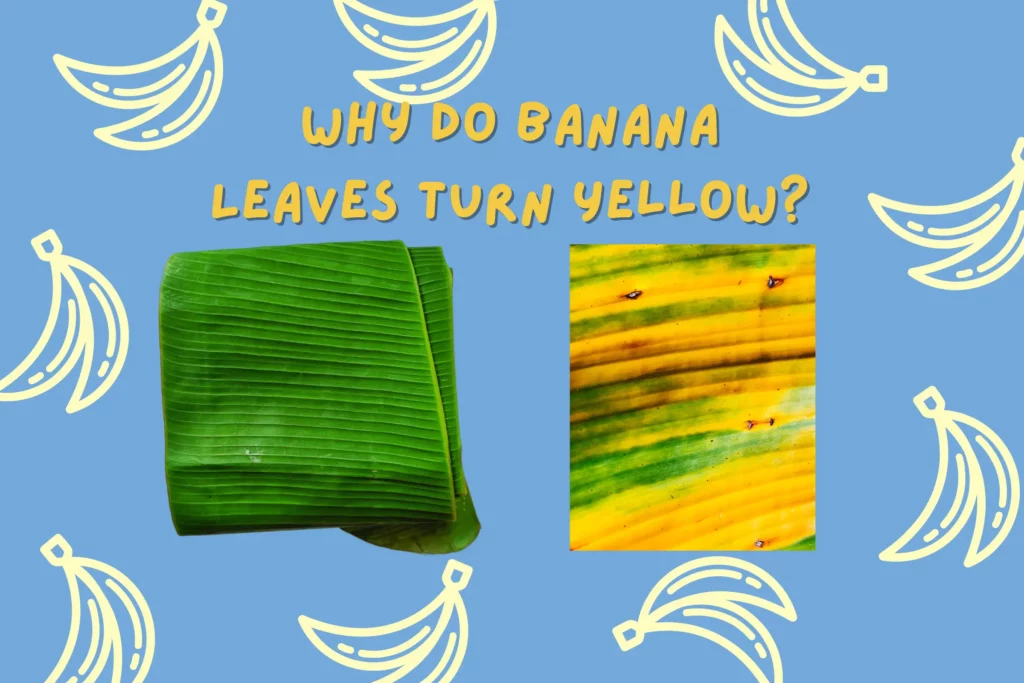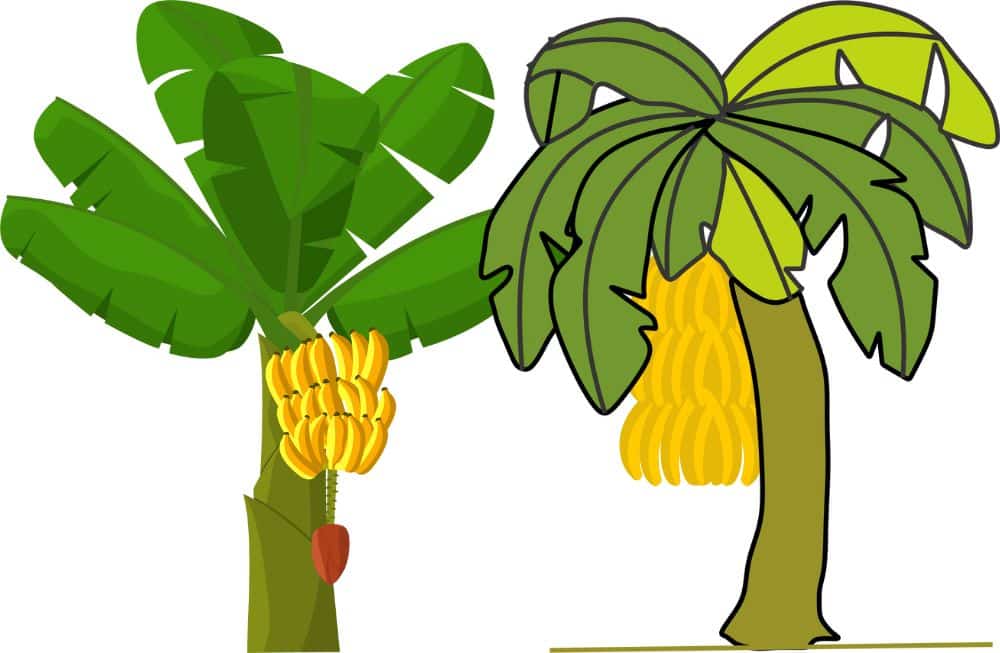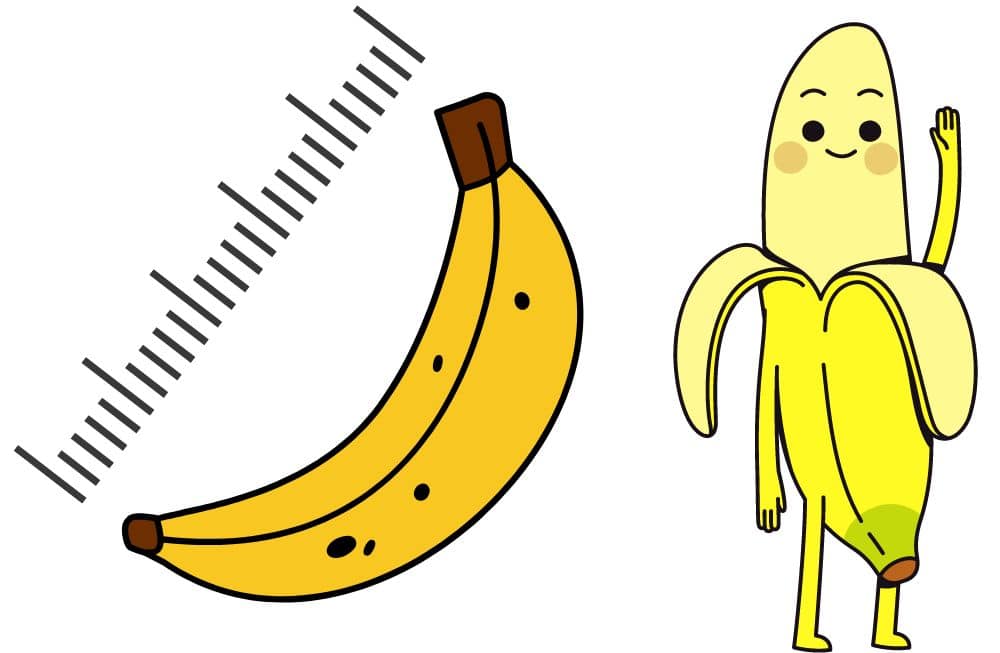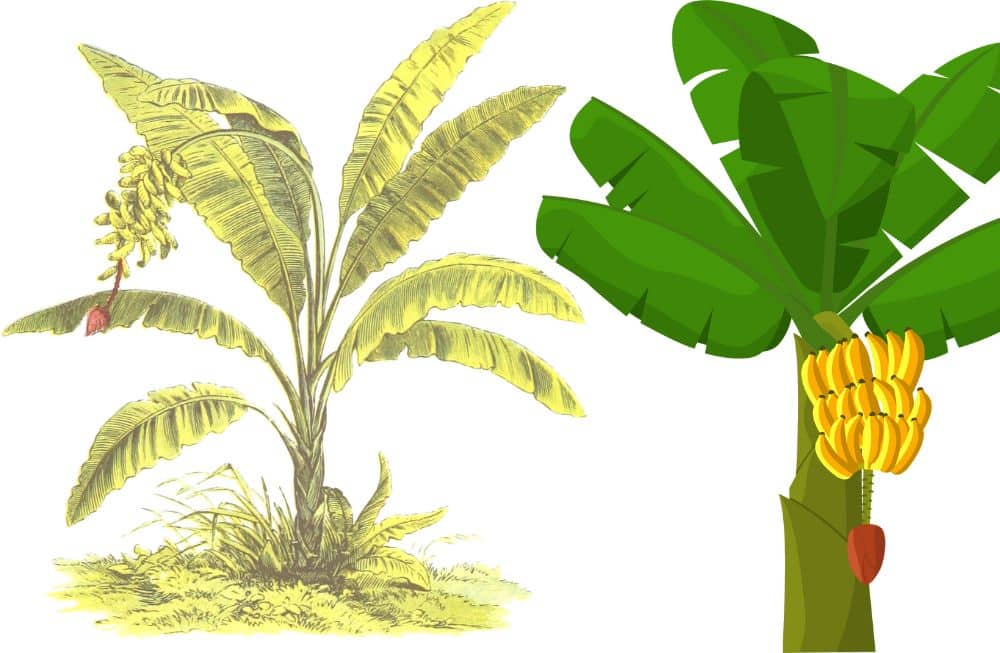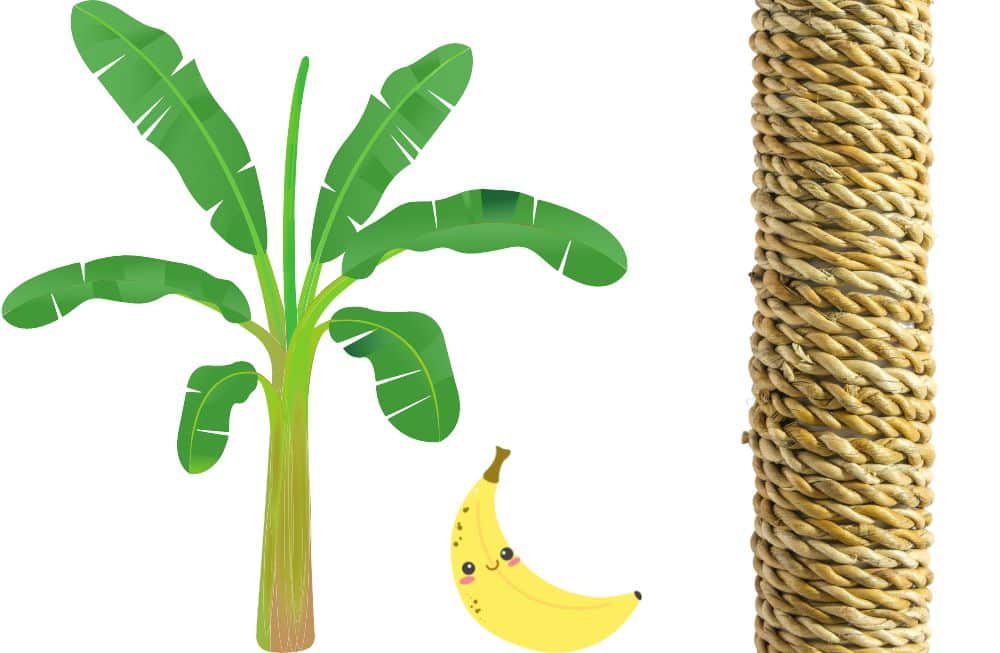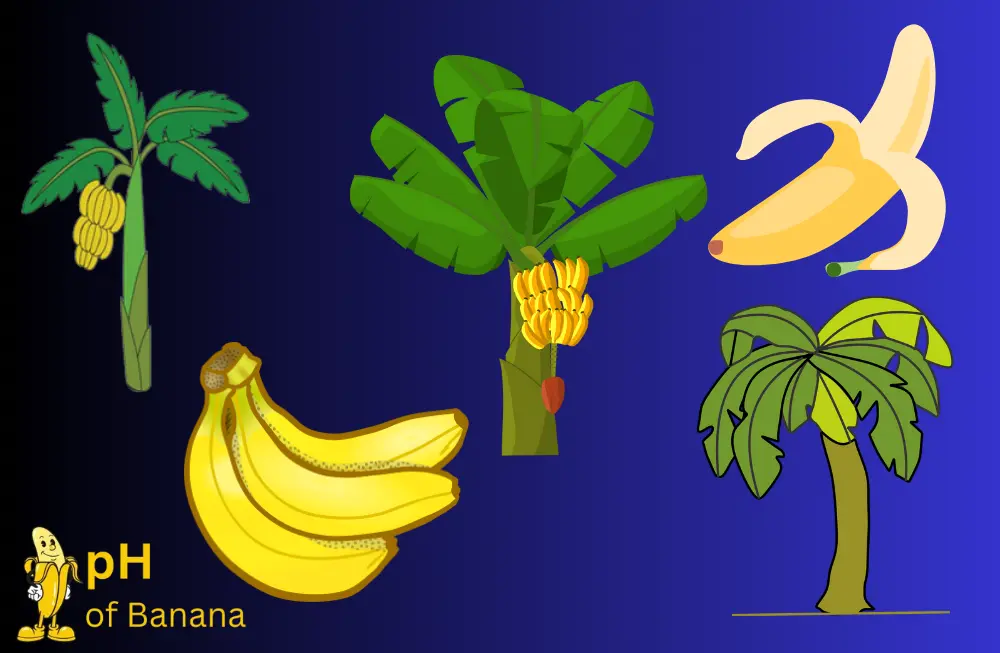The main reason for yellowing banana plant leaves is that the plant isn’t receiving enough nutrients. One of the main causes of your banana plant’s yellow leaves is poor drainage, followed by insufficient fertilizer, excessive watering, transplant shock, and fungus infections.
Think of yourself as a proud plant parent, caring for a lovely banana plant in your backyard or maybe indoors. However, one day you discover something alarming. Your heart begins to race as you see that your cherished banana plant’s leaves are beginning to turn yellow.
Because I’ve experienced it myself, I completely understand how you feel. My quest for knowledge and understanding began when the dreaded yellow leaves appeared on my own banana plant. Then I did extreme research on caring for banana plants and discovered why this happens and how to cure it.
So, today I can’t wait to share the knowledge and solutions I’ve discovered with you. In this article, we’ll learn why banana leaves turn yellow and all about it. So, stay tuned to find out!
The 6 Reasons Banana Leaves Turn Yellow
The first step in solving the mystery of why the leaves of your banana plant have suddenly turned brown and yellow is to pinpoint the cause. Hopefully, it’s just a normal part of the process of shedding, in which case you have nothing to worry about.
However, this might be an indication of a transplant shock, inadequate watering, nutritional deficiency, excessive sunlight, or other problem.
The most frequent reasons for banana plant leaf yellowing and browning, as well as some suggestions for dealing with these issues, are briefly discussed here. Let’s start:
1. Natural Shedding
As they age, banana trees continue to grow higher and taller from the central stem. The leaves will begin to turn yellow at this point, and you could observe brown discoloration along the margins. Before the leaves ultimately separate and fall off the tree, this will take place. After fruiting, a banana tree’s stem often dies, allowing for the development of new pups.
The first indication that this is occurring is the yellowing of the leaves. This is quite normal since the old leaves die to make room for the new ones to flourish.
Trimming the old leaves as they begin to turn yellow or brown might hasten this process, but it is not required. After the bananas have been fruited, you may remove the main stem and use it to generate mulch for the young and growing trees.
2. Improper Watering
If a banana plant hasn’t lately produced fruit but its leaves are still becoming yellow and brown, another problem is likely to be at play. Improper watering is the next possibility for a reason. The secret to keeping your banana healthy and growing is consistent and appropriate watering.
Both too much and too little water may harm the leaves and cause them to change color and become yellow and brown.
Overwatering
The leaves of your banana will likely start to wilt, turn yellow and brown, droop, and finally fall off if you’ve overwatered it. The brown spots normally start to show up closer to the center of the leaf when there is too much water present. If you see this, you may remove the affected leaves since they won’t regrow. This will also encourage the development of new leaves that emerge from the tree’s heart.
The dense, heavy clay soil is thus the primary cause of overwatering since it prevents efficient drainage and is readily saturated. Add 1-2 inches of compost once a month and let it permeate the soil to improve drainage to improve the soil’s suitability for banana trees and avoid overwatering.
Underwatering
Lack of water may be harmful to the banana plant as well. The leaves will initially become yellow and then develop a brown tinge around the tips if the soil is allowed to dry up. This should alert you to the fact that the banana plant is not receiving the deep soaking necessary to maintain the health of its leaves.
Bananas want soil that can hold onto moisture without becoming soggy since the latter may lead to the overwatering issues I previously mentioned. So be sure to consistently and thoroughly water your banana plant, particularly during the hot summer months and even during the winter if there is little rainfall.
3. Improper Nutrients
Similar to watering, nutritional deficiencies or excesses may harm banana plants. Therefore, it’s crucial that you determine how much nutrients your banana really needs and give it the appropriate quantity.
If not, your banana tree may have a number of problems, such as the leaves becoming brown or yellow.
Insufficient Nutrients
| Nutrient Deficiency | Leaf Symptom |
| Nitrogen | The whole leaf is pale or yellow |
| Iron | Dark green veins, remaining of the leaf is yellowing |
| Zinc | Yellow blotches |
| Manganese | Largely pale leaves and foliage seem smeared or speckled. |
Source: The University of California Agriculture and Natural Resources
A banana’s leaves are likely to become yellow or brown if it is deficient in essential nutrients, particularly if it is not able to absorb enough nitrogen. The poor soil quality that may be nutrient-leaching as a result of excessive drainage or overwatering is the major cause of this possibility. This causes the beneficial nutrient to penetrate the soil too deeply, out of the reach of the banana roots.
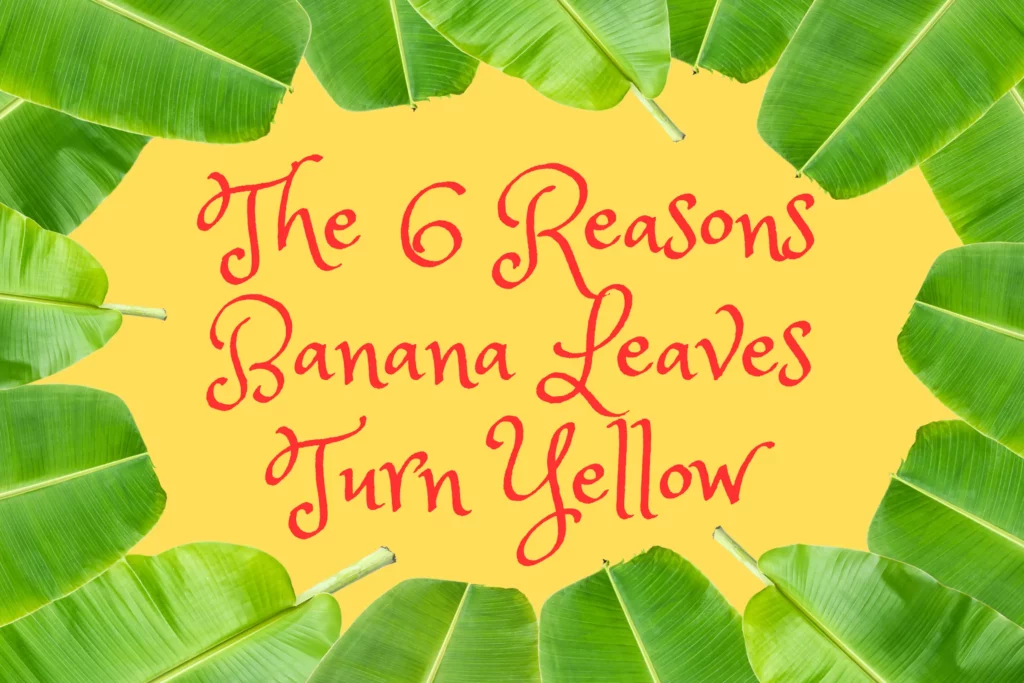
Excess Nutrients
The health of your banana tree will not benefit from having too many nutrients. If you overfertilize banana plants, an abundance of brown or yellow dots on the foliage is often the result. The use of fast-release fertilizers may also be a contributing factor since the compost is insufficiently potent and the plant cannot digest and absorb nutrients at such a rapid rate.
When this occurs, you should pay close attention since leaf browning is often merely a sign of more severe problems, including burning banana roots.
4. Fertilizing Banana Plants
It’s crucial to understand how to fertilize your banana plants correctly to prevent problems with either inadequate or excessive nutrition levels. You may do it with either store-bought fertilizer or homemade compost.
Look for slow-release, balanced NPK fertilizer, which combines nitrogen, phosphorous, and potassium, if you opt to purchase fertilizer from the store. Nevertheless, I would advise choosing organic compost over synthetic fertilizers.
Chemical fertilizers contain a lot of nutrients, but they are often of poor quality, which might impede the good interaction between the banana plant and the beneficial soil life. Contrarily, compost encourages healthy soils, aids in water retention, and offers all the nutrients plants need.
5. Sunlight
Bananas require a lot of sunshine since they are tropical plant and need it to properly develop and flourish. You must give your banana plant at least six hours of direct sunshine each day for it to photosynthesize well.
The leaves will likely wilt and become yellow if you don’t do so, which will prevent the whole plant from producing sugar. This may develop into a serious issue over time and cause your banana plant to perish.
How to Increase Sunlight? Let’s see:
- Plant towards the south/north: For the most sunshine, place the banana plant towards the south (or north if you are in the southern hemisphere).
- Plant along with a south-facing wall: To reflect more heat and sunshine into the tree, place the banana plant along a south-facing wall (some heat even lasts into the night).
- Prune: Cut back any overstory trees that are obstructing the light from reaching the banana plants’ canopy. Banana plants tolerate partial shade (particularly from the stronger afternoon light), where they developed as understory plants. To help the mid and lower branches get more light, you may also trim the top banana plant. Additionally, the increased aeration from the sun and breeze discourages the growth of pests and illnesses in this new area.
6. Transplant Shock
Why are my banana plant leaves turning yellow may be the question you’re asking if you’ve ruled out all the factors indicated above but are still confused. This might be because the plant was recently moved.
The banana plant may experience transplant shock after being replanted or moved, which may cause its leaves to turn yellow, droop, and finally fall off. Because of this, you should move your banana plant as soon as you can and take special care not to harm its roots.
Is It Bad If Banana Leaves Turn Yellow?
It’s normal to question if your plant is in trouble when you see your banana plants’ leaves beginning to turn yellow. Yellow leaves are a warning sign, but they don’t necessarily imply your banana plant is in imminent danger. In truth, the banana plant’s development cycle may include periods when the leaves of the plant are naturally yellow.
Older leaves gradually deteriorate with time, becoming yellow and then brown before dropping off the plant. However, if a significant proportion of leaves are prematurely turning yellow or if the yellowing is accompanied by other symptoms, it might point to an underlying issue.
What Can You Do to Prevent Banana Leaves From Turning Yellow?
It might be challenging to maintain green banana leaves. While maintaining the leaves may seem like a routine task, there are a few best practices to adhere to in order to keep them bright and healthy. Make sure your plant obtains the essential nutrients and the best growth circumstances if you want to avoid yellowing banana leaves. Here are some suggestions to maintain your banana plant strong and healthy:
- Proper Feeding: A balanced fertilizer that includes important nutrients, particularly potassium, magnesium, and iron, should be applied to your banana plant to ensure proper feeding. Maintain the plant’s nutritional levels by feeding it often in accordance with the suggested dose.
- Adequate Watering: Water your banana plant well, but do not overwater. As excessive moisture may cause root rot and nutritional shortages, make sure the soil has enough drainage to avoid becoming waterlogged.
- Soil pH: Check the pH of the soil, and if required, make modifications. The pH range of 5.5 to 7.0 is ideal for banana plants, which flourish in slightly acidic to neutral soil.
- Mulching: To conserve moisture, control soil temperature, and offer a slow-release source of nutrients, spread a layer of organic mulch around the base of the plant.
- Sunlight Exposure: Exposure to sunshine is essential for banana plant growth. For optimum development, make sure your plant gets at least 6 to 8 hours of direct sunshine every day.
If you follow the tips I gave you, I can guarantee that your banana leaves will keep maintaining the bright green texture.
Should I Cut the Yellow Leaves Off the Banana Plant?
No, you shouldn’t cut the yellow leaves off the banana plant. On a banana plant, the decision of whether to remove yellowing leaves is pretty confusing. The golden leaves should generally be left standing until they become brown and are totally dried up. This is so that the plant may continue to get some nutrients from the leaves even after they have reached complete demise.
However, to stop the issue from becoming worse, it could be essential to remove the yellowed leaves if the cause is a serious illness or deficiency. To prevent additional harm to the plant, always prune using clean, sterile tools.
How Can I Revive A Banana Plant With Yellow Leaves?
I know it’s pretty sad to see your beloved plant losing its charm. You won’t want to leave it like that right? So, I did some research, and guess what? I found out how you can easily revive a banana plant with yellow leaves. A banana plant with yellow leaves may be effectively revived using the following methods:
- Determine the Root Cause First: Look for what is causing the leaves to become yellow. Consider things including soil conditions, irrigation techniques, nutritional deficits, and solar exposure. You can solve the problem more successfully if you can find the source of the problem.
- Adjust Watering: If overwatering or poor drainage is the problem, change your watering procedures. In order to avoid soggy situations, allow the soil to somewhat dry out between waterings and make sure sufficient drainage is in place. The plant’s health may be recovered by adjusting the watering schedule.
- Nutrient Boost: Provide a targeted nutrition boost if nutrient shortages are the root cause of the yellowing leaves. Use a fertilizer with a high potassium, magnesium, and iron content that is specially prepared for banana plants. To restore the nutrients in the plant, apply the fertilizer as directed.
- Trim Dead or Damaged Leaves: You can safely cut the yellow leaves after they have completely gone brown and dried up. To remove the dead foliage, use sterilized pruning shears. This not only enhances the look of the plant but also enables it to focus energy on future development.
- Improve Soil Health: Enhance soil quality by adding organic matter, such as compost or well-rotted manure, to improve soil health. This promotes overall plant health by enhancing soil structure, drainage, and nutrient availability.
- Provide Adequate Sunlight: Make sure your banana plant gets enough sunlight. Consider transferring it to a location where it may get at least 6 to 8 hours of direct sunshine each day if it is grown indoors or in a darkened region. Photosynthesis and leaf development are aided by enough sunshine.
- Keep an eye out for Pests and Diseases: Check your banana plant often for any symptoms of Pests or Diseases. Aphids, mealybugs, and spider mites are typical pests that harm banana plants. Infestations should be treated quickly with organic or chemical pesticides if they are discovered. Additionally, keep an eye out for symptoms of bacterial or fungal illnesses and take the necessary precautions to manage them.
You may revive a banana plant with yellow leaves and bring back its brightness and health by following these instructions and giving it essential and proper care.
FAQs
Can I use any fertilizer for my banana plant?
It is recommended to use a fertilizer specifically formulated for banana plants to ensure they receive the necessary nutrients.
How often should I water my banana plant?
Water your banana plant deeply when the top few inches of soil feel dry. Avoid overwatering to prevent waterlogged conditions.
Should I remove the yellow leaves immediately?
No, you should wait until the yellow leaves have turned brown and dried up completely before removing them.
Conclusion
There you have it! In this article, I tried to describe why banana leaves turn yellow and how you can easily prevent this issue from happening. I hope you found your answer and were able to fix your plant’s yellow condition.

